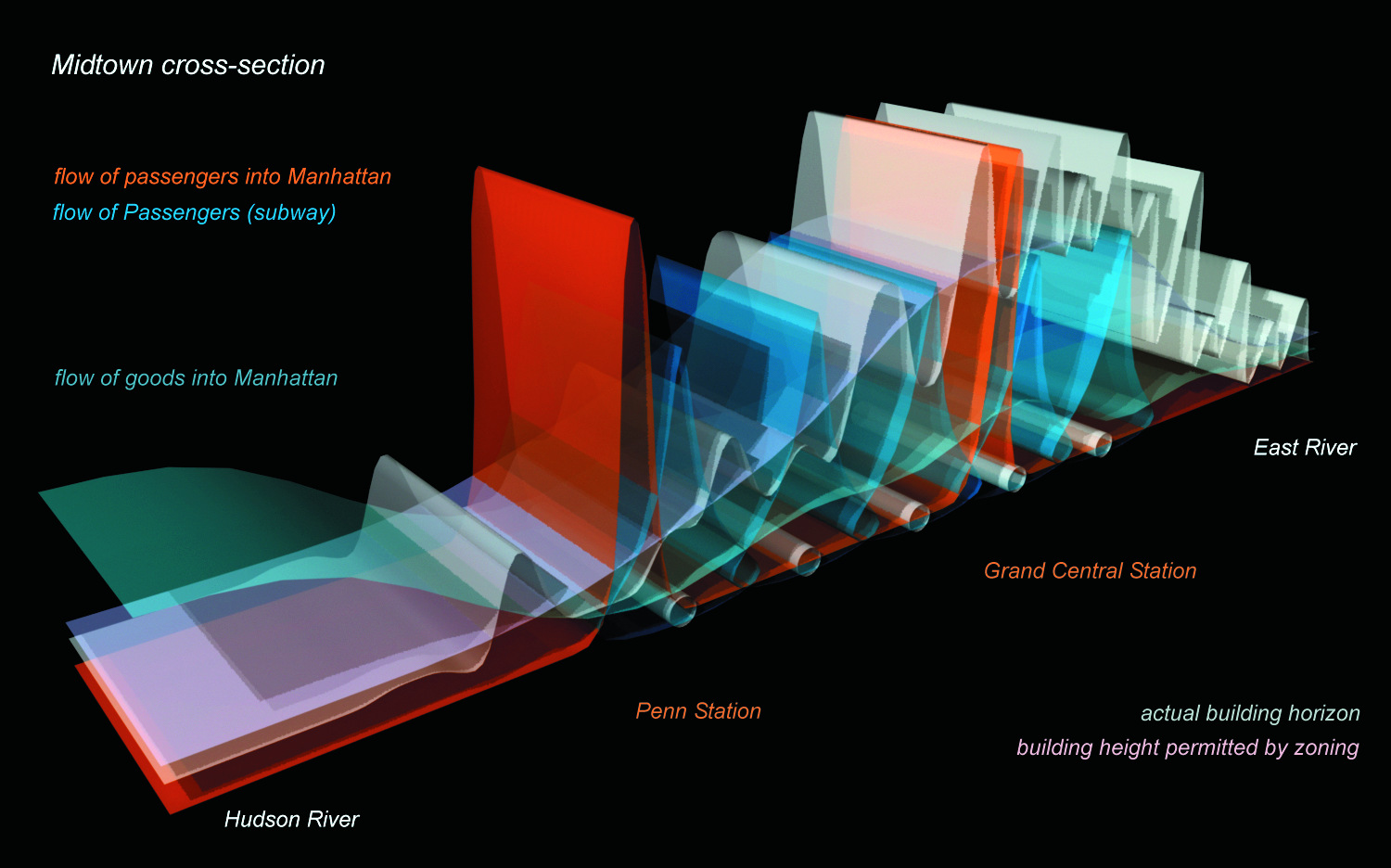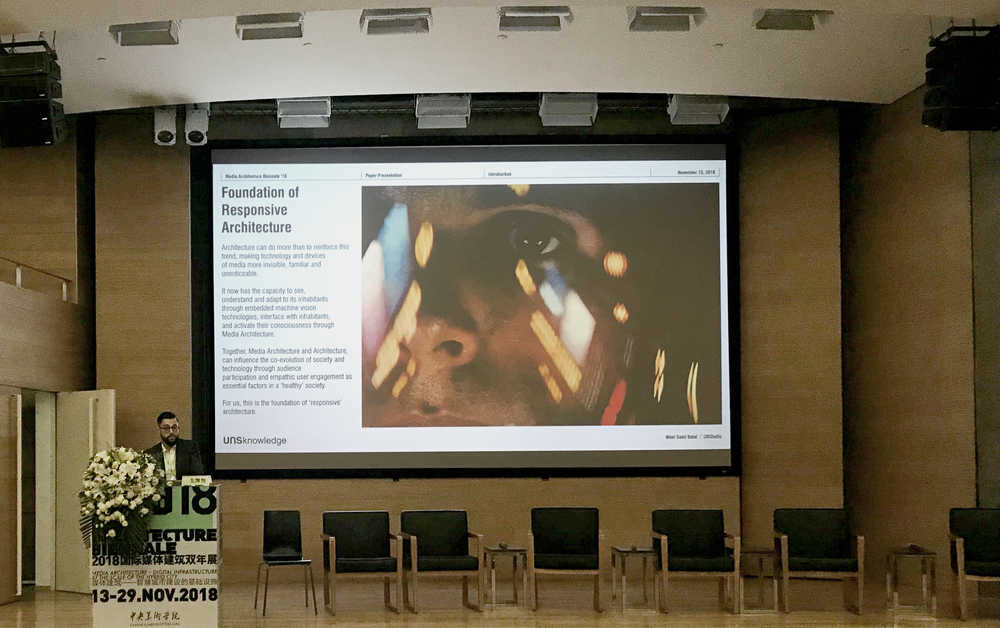UNSKnowledge on the responsive technologies of social health: part of an on going knowledge sharing series on health.
By Ben van Berkel, Wael Batal and Filippo Lodi
With the current pace of technological innovation and scientific progress, the conditions that shape society are more fluid and ephemeral than ever before in today’s ‘Fourth Industrial Revolution’. The Founder and Executive Chairman of the World Economic Forum in Geneva, Klaus Schwab, offered the term early in 2018 as a means to understand our present techno-saturated socio-cultural condition in relation to previous phases of booming technological innovation. The emergence of a global and digitally interconnected ecology of data continues to pervade daily life with tremendous impact on consumption, production, governance and the relations between people. While its scale of impact is expansive and global, the most significant differences between the fourth phase and the prior three are twofold: the extreme speed of evolution in the tech spheres, and the increased blurring between the physical and the digital; man and man-made; natural and artificial; real and virtual.
To meet the challenges of this phenomenon, architecture and city planning are in the throes of reinvention. Through the seamless integration of sensory technology into its surfaces and the mobilization of machine vision into its operational infrastructure, architecture can now interactively sense and engage with its surroundings and its inhabitants in real time. Through this, UNStudio, as a knowledge practice, acquires new modes of vision to critically navigate and actively shape this reinvention. Through the simultaneous exploration of strategies for the implementation of embedded sensory technology in architecture, and the evaluation of their effects on society, the discipline of architecture can widen its performative impact on the world; the sort of impact that prioritizes Health and Well-Being is an essential lens through which to focus this effort.
One of the primary, and frequently overlooked, aspects of a ‘Healthy’ society is the participatory interaction between the individual and the constructs that shape the collectivity to which the individual is a part of; beyond the interaction enabled by social media. For media theorists such as McLuhan, these constructs are made visible in the intersections of technologies, devices of media, and audience, and produce an acute awareness of the inner workings of society. “… it is the medium that shapes and controls the scale and form of human association and action.” This awareness allowed for his well-known distinction of media into categories, as either ‘hot’ - such as film, text, radio, which is high definition, with low room for interpretation and does not require participation from the user to complete the system – or media that is ‘cool’ – such as television or cartoons, with low definition, therefore ample room for interpretation, and high participation. For this distinction to carry discursive weight, each medium had to maintain its specificity, and adhere to its own specific properties monolithically. However, in the age of the internet, data mining, LIDAR scanning, mobile supercomputing, and artificial intelligence, mediums such as these are categorically non-specific as their properties blend and flow into one another.
Take, for example, the exhibition by Li Edelkoort, a prominent trend forecaster, in collaboration with Google for Milan Design Week in 2018. As an extension of Li’s 1998 project, Soft Wear, technology is deployed throughout the interior of the home and workplace to explore how it and can be absorbed into everyday life. Google designed products are interspersed with familiar objects designed by Edelkoort, in multiple rooms, curated together in a scene where neither technology nor the everyday, overshadows or diminishes the other; they simply coexist. This effect was brilliantly delivered through the use of textiles and fabrics in the design of both products and objects, which provided a common substrate – or medium - through which they could be simultaneously received by an audience. Implicitly, the most essential aspect of the show is that the audience - or the user - is at center stage and is engaged as a passive participant. While people could sense and feel the fabric products and objects on display, the products and objects would also sense and feel the audience in reciprocation.
As a medium through which matter and social interaction are organized together through built form, architectural design today gains a similar participatory instrumentality. While architecture has actively embedded technologies of plumbing, air conditioning, heating, ventilation, electric cables, cameras, and smoke detectors, into the thickness of its walls, floors and skins, it is still in the early stages of integrating sensory technology and machine learning software that enables the interconnection of those elements into a coherent and responsive living network; a network that opens up and allows people to be actors [10], co-authors, co-organizers, editors and observers of their own city. Still, as technology continues to blend seamlessly into our daily lives, appearing friendly and as background, slipping into our collective unconscious, how can society maintain a critical cultural awareness to actively participate in shaping the world around us? Technology is by nature something that is not fully understood or familiar. That’s what allows it to transform and adapt to society, and for society to reflect back into the production of technology. If the sounds of the squeaky wheel cannot be heard by society, then it will never be fixed, changed or adapted. Once technology is absorbed and accepted into society, it becomes a tool indistinguishable from a hammer.
In the era of voice active smart home devices, miniaturized phone cameras and microphones, Alexa, geo-location tracking, data mining through stored online information, the visibility of technology decreases to a point of near invisibility; widening the gap between attentive social participants and non-attentive. Further, in the near future, advances in nanotechnology and biotech will not only allow neuro-implanted digital augmentation of human consciousness, but will also allow us to “pattern atoms – the building blocks of the physical world – in the same way that we patterned 1s and 0s in the digital universe”, according to Jason Silva in The Next Web 2018 Conference in Amsterdam. Matter itself will become a programmable medium, and as such, man-made technology will bleed into – and disappear within - the hidden structures that constitute nature.
In this sense, design can do much more than to reinforce this trend by making technology and devices of media more invisible, familiar and unnoticeable through soft materials, curved pleasing forms, intertwining strands of fabric with copper wires, silicon boards and buttons. Design must also avoid a retrograde swing in the opposite direction towards the functionalist expression of either firmness or utility, without regard for delight; as in the Bauhaus or International Style.
As architecture has the capacity to see, understand and adapt to its inhabitants through embedded machine vision technologies, it can interface with inhabitants, activating their consciousness and allow for empathic human engagement. The user can be an active participant in the construction of their environment and, further, can influence the co-evolution of society and technology at large. For us, this is the foundation of a responsive architecture; one that facilitates audience participation and empathic user engagement as essential factors in a healthy society and resilient cities.
What is architecture’s agency in mediating this responsiveness in a post-medium specific world? How can architecture integrate technology into its surfaces without making it totally invisible and familiar? We will explore these questions through the lens of the following topics and through some of our projects:
- Health and Technology
- Resiliency through Responsiveness
Presented at Media Architecture Biennale, 2018
Published in MAB18 proceedings: Ava Fatah gen. Schieck, Dave Colangelo, Chang Zhigang (Eds.). 2018. Proceedings of 4th Media Architecture Biennale Conference: Digital Infrastructure at the Scale of the Hybrid City, 13 - 16 November 2018, Beijing, China ACM Digital Library, USA.




